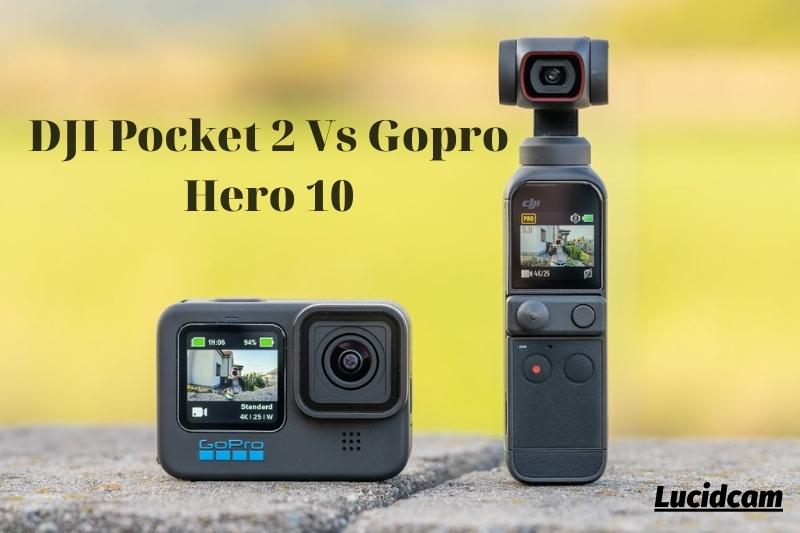When it comes to choosing a camera, there are many factors to consider. But if you’re looking for the best of the best, it’s hard to go wrong with the DJI Pocket 2 or the GoPro Hero 10. Both cameras offer excellent image quality and features, but which one is right for you? Let’s take a closer look at the DJI Pocket 2 vs. GoPro Hero 10 to help you decide.
Table of Contents
- 1 DJI Pocket 2 Vs Gopro Hero 10
- 1.1 Design & Handling
- 1.2 Screen and User Interface
- 1.3 Stabilization
- 1.4 Sensor: Larger Sensor, Lower Resolution
- 1.5 GoPro Has Better Shooting Modes
- 1.6 Photo quality
- 1.7 Video Quality – Resolution & Framerates
- 1.8 Video Quality – Colors and Overall Look
- 1.9 Video Quality – Low light performance & Dynamic Range
- 1.10 Autofocus Video Quality
- 1.11 Audio Quality
- 1.12 App
- 1.13 GoPro Lasts Longer Battery Life
- 1.14 Heat Generation
- 1.15 Pricing
- 1.16 Accessory
- 2 FAQs
- 3 Conclusion
DJI Pocket 2 Vs Gopro Hero 10
[amazon table=”12985″]Design & Handling

Although they share similar use cases, it is clear that the cameras are different when compared side-by-side. Pocket 2’s shape is wand-like, which makes it easy to hold in your hand and move around quickly without feeling uncomfortable. The buttons are easy to reach on the sides and front, and the gimbal can be set to point forward or back at startup.
You can also attach interchangeable parts to the middle. This is where you can attach your joystick controller or hook up the smartphone to get a better view and in-depth control. The Pocket 2 isn’t an action camera like a regular one. It doesn’t have waterproofing or a rugged body.
The design’s biggest flaw is the exposed SD card slot. This makes it more difficult to avoid moisture.
These problems are not present in Hero 10. Hero 10 looks identical to Hero 9. However, Hero 10 has a blue logo at the bottom. It is made of tough plastic that can withstand scratches and tumbles. The waterproof rating of the camera is 10m without the need for housing. Hydrophobic coating has been added to the lens. This wicks off droplets and allows you to capture clean footage as soon as your GoPro surface.
The Hero 10’s internals is protected by a secure latch. It opens to reveal the SD card slot as well as a USB-C port. The latter can be used for both charging and wired file transfer.
Screen and User Interface
While both cameras can be used to view what you are filming, the Hero 10 is better. The Hero 10 comes with two screens: one in front and one at the back. They can be used simultaneously. They can be used in direct sunlight with no problem. The viewing angles are excellent.
The Hero 9 had a few major flaws, including slow menu navigation. The new CR2 chip addresses this issue and allows for smooth navigation. Navigation is effortless because the menus are responsive and easy to use. Voice commands are making a comeback, much to the delight and amazement of all those who don’t want to touch or surf while kayaking or surfing.
Because of its small screen, the Pocket 2 is an inherent disadvantage in this category. The Pocket 2’s narrow diagonal measures just 1.08 inches. This means that you will need to focus very hard to see small objects. The screen is bright enough and responsive to touch, regardless of whether you are navigating menus or choosing focus points.
The menu system is fine. However, screen size does affect its use. Navigating menus one at a time will be difficult, and you’ll need to rely on basic information when using the Mimo app.
Stabilization
Without a comprehensive overview of all the image stabilization options available, no DJI Pocket 2 vs. GoPro Hero 10 battle would be complete. Both devices work flawlessly for their intended purposes, and it’s a close race, we’re happy to say.
The fourth HyperSmooth version is used by the Hero 10, which is still software-based. Although it is an incremental upgrade to HyperSmooth 3.0, we are happy with this as there was little left to improve. Its primary strength is its ability to provide noticeable stabilization without compromising the camera’s physical integrity.
The HyperSmooth feature eliminates unwanted bobbing movements. It also makes it easier to capture smoother images in dynamically changing situations. This has a negligible effect on image quality.
The Hero 10’s most important improvement in stabilization was the expanded horizon leveling. The angle was increased from 27 to 45 degrees, which allows you to maintain a straight horizon with less attention. As low light can have a negative effect on HyperSmooth’s responsiveness, it is still a limitation.
The Pocket’s 3-axis gimbal is the best, however. The Pocket 2 offers four tracking modes, unlike action cameras which typically only have one. You can choose to follow a subject using either panning and tilting or keeping the horizon at the same level.
The firmware update introduced the ability to lock the camera at its current position, effectively turning it into a gyroscope.
Gimbal systems are great for tracking the faces of subjects. Vloggers who keep the Pocket 2 at arm’s length will always be the center of attention. Although the Pocket 2’s tracking capabilities are less reliable when it is remote controlled, this is not its main purpose.
Sensor: Larger Sensor, Lower Resolution
GoPro Has Better Shooting Modes
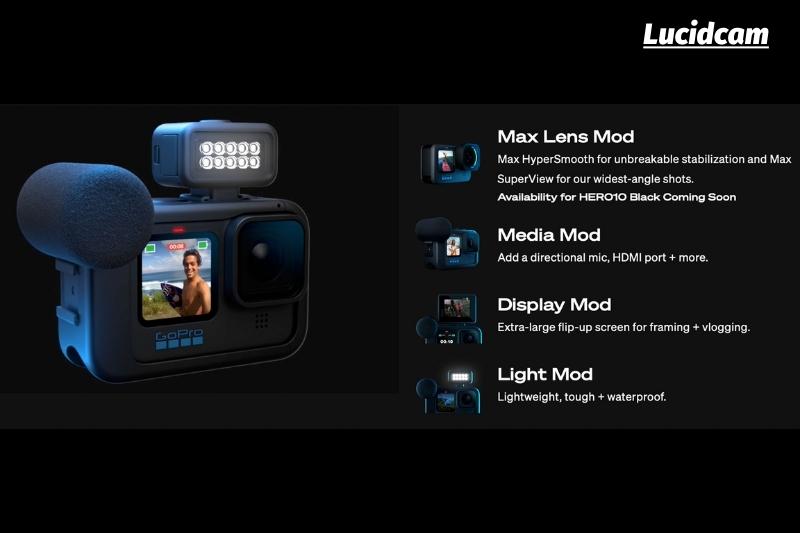
Photo quality
After the advent of video cameras, still, photography was a secondary option. This is no longer true. We are happy to include photo quality in the DJI Pocket 2 vs. GoPro Hero 10 debate.
The sensor on DJI’s camera is 1/1.7 inches, which is significantly larger than the 1/2.3 inch sensor that the Hero 10 inherits from its predecessor. If you use the dedicated photo mode and shoot in raw DNG, the Pocket 2 can capture images up to 64MP. Screenshots are resized to 16MP but retain good colors and detail.
The Panorama mode on both cameras is available, but the Pocket 2 has a way to stitch nine photos together in a 3×3 grid.
The Hero 10’s smaller sensor has limitations in both output and quality. You can grab stills at resolutions of 19.6MP or 15.8MP. GoPro has added a photo mode that increases the maximum resolution to 23MP.
Video Quality – Resolution & Framerates
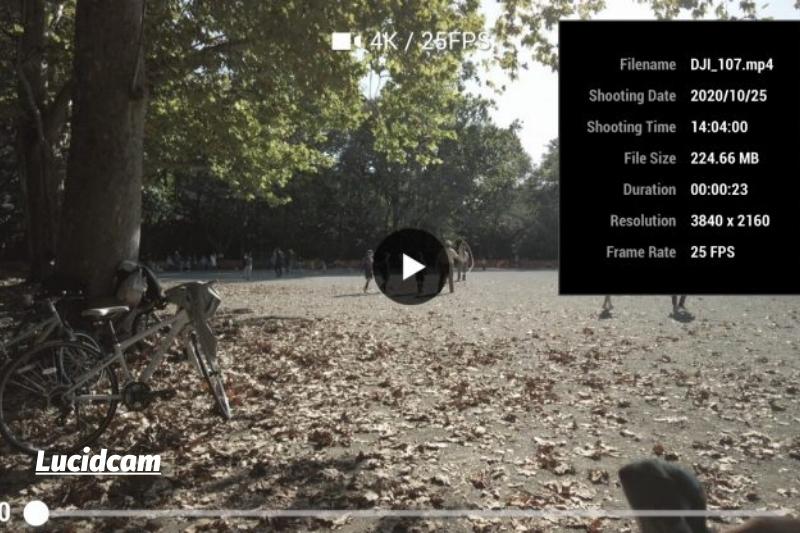
We’re breaking down the DJI Pocket 2 vs GoPro Hero 10 fight into multiple segments.
The Hero 10 won the resolution and framerates category, to no one’s surprise. It was CR2, the second generation of the chip, that enabled the Hero 6’s unprecedented 4K at 60fps. Now you can capture video at the same framerate but in 5.3K. You also get significant speedups.
The Hero 10 can also output 4K video at 120fps and 2.7k at 248fps, making it possible to produce some of the sharpest slow-motion videos available.
Although the Pocket’s 4K 60fps appears dated, raw numbers will not be equal in weight.
Video Quality – Colors and Overall Look
This category showcases the camera’s different uses, despite both being excellent in quality.
The Hero 10 action camera compensates for its small sensor size by delivering sharper images due to its higher resolution. GoPro has mastered the tone. The footage is vibrant and not too garish. The same attention was paid to color balance and the presentation of all colors in a stylishly enhanced way.
Everything from lush forests and windswept dunes will look just a little better than they do in real life while still maintaining credibility.
The default profile of the Pocket 2 is all about presenting you in a positive light. The surroundings are more natural and muted. The other side of the coin is that skin tones are slightly boosted for a flattering appearance. This effect is constant regardless of the lighting conditions.
The cameras come with useful presets for cinematic shooting that allows you to retain more information about color and shadows. Although the raw video looks dull, you can use them to color grade the video.
Video Quality – Low light performance & Dynamic Range
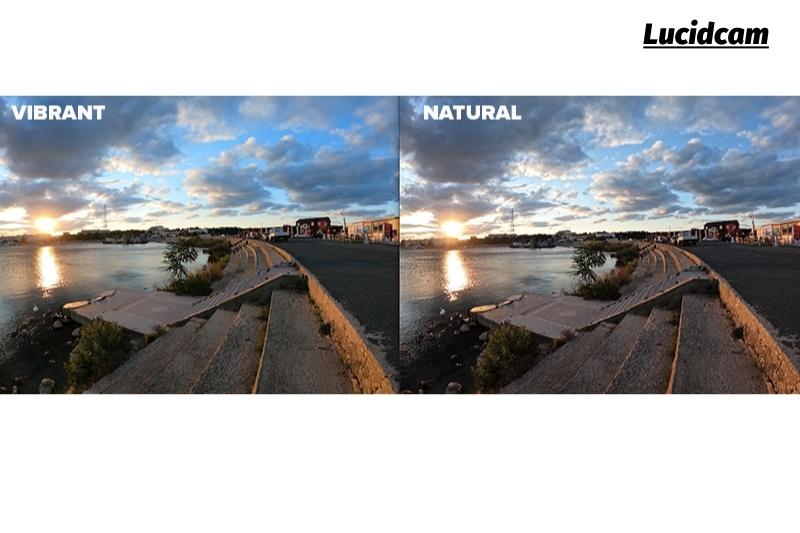
Compact cameras are more sensitive to difficult lighting conditions than other models. This problem has not been solved by multiple generations of updates. Although both companies have made significant improvements, the Pocket 2 is still the best of its kind.
GoPro deserves praise for rectifying another Hero 9 fault – poor low light performance. This was especially evident in sunset scenes where both the captured light and colors were poor. Its successor is much more successful, producing brighter and richer videos in the same conditions.
However, this is still not enough to match Pocket 2’s low-light chops. In cloudy and sunset conditions, it retains more nuanced colors. It has a wider aperture at f/1.8 and a larger sensor, which makes it easier to view and more enjoyable to look at.
Regardless of what camera you use, don’t expect miracles. A strong backlight on the Pocket 2 will make the sky look incredibly blurry. High-contrast situations can cause detail loss in blacks as well as whites. You will need to be able to tolerate some noise if your goal is to brighten the video with an ISO increase.
Another advantage is the Hero 10, which has a slightly larger dynamic range. Although the Pocket 2 was updated shortly after release with HDRI, it did not improve image quality.
Autofocus Video Quality
This part of the DJI Pocket 2 vs. GoPro Hero 10 match is won by DJI. Because the Hero 10 has a small sensor and narrow aperture, it brings all of the scenes into focus. Your face and surroundings will not be out of focus. However, your artistic expression may be limited.
A Pocket lens’ aperture of f/1.8 allows for depth of field effects. Although you won’t get creamy bokeh results, it is possible to create a blur effect that brings the subject closer to your subject. The Pocket’s autofocus tracking system is superb.
Audio Quality
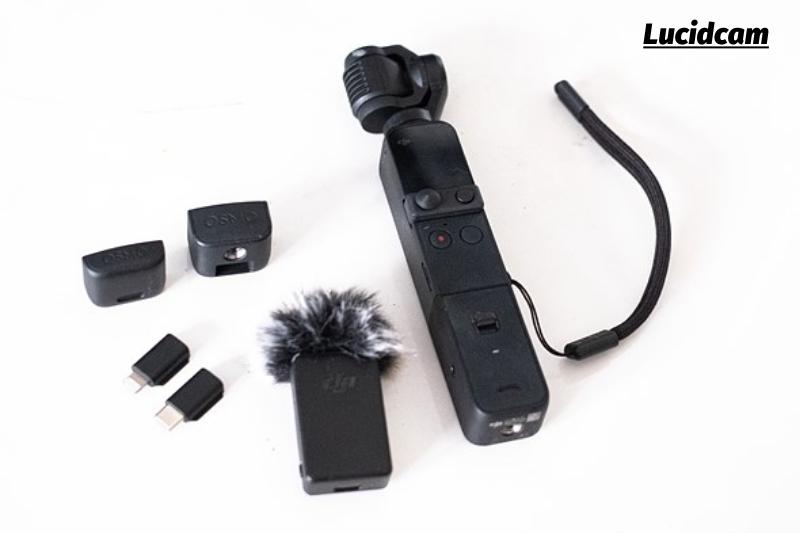
Over the years, GoPro cameras have received incremental audio upgrades. This trend continues with Hero 10. The camera has three microphones inside and can reduce background noise or wind sound if you set the settings.
The audio quality of the first Pocket was poor and tinny. DJI quickly recognized the problem and dramatically improved the quality. You now have four microphones available, which allows you to achieve excellent sound quality even in difficult situations.
The Creator Combo Kit includes a wireless microphone with a dead cat, a stand with an external microphone jack and a 3.5mm connector for external microphones. This further enhances the audio capabilities of the camera.
App
Both cameras have comprehensive mobile apps that make it easy to transfer photos and videos. DJI Mimo offers advanced editing and a community component. Quik is still more intuitive and makes it easier for live streaming to sites such as YouTube. Both cameras are equally important to you.
Mimo works best when your smartphone is paired through the adapter. The adapter will allow you to automatically change the screen mode, frame rate, and other recording options. You can also use the virtual joystick for precise focus points.
The app also has a community component that allows you to share, critique and take inspiration from others’ creations.
Quik, as the name implies, is about sharing, organizing, and editing your adventures. It is easy to use, making basic operations such as trimming and changing the playback speed on-the-fly as simple as possible. Access to music tracks and intros can be added to your videos. These effects will make them more memorable.
GoPro Lasts Longer Battery Life
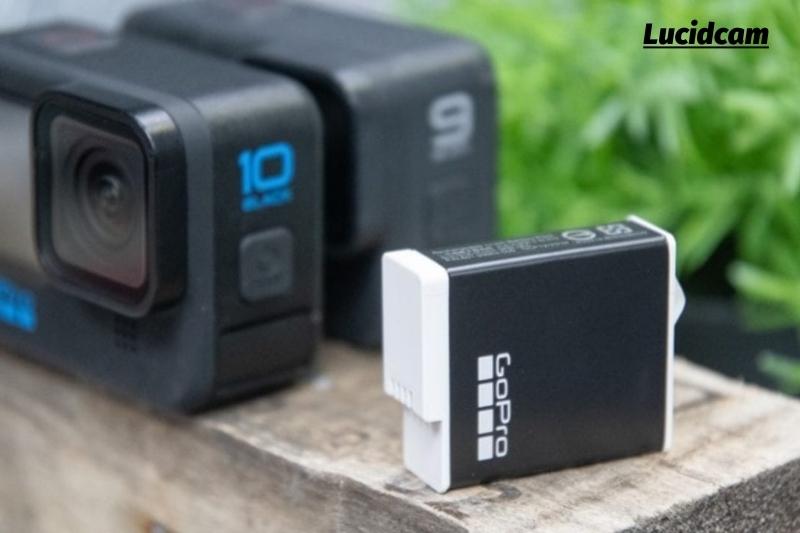
The battery life of cameras like this was always a problem. This new generation does not address the issue. The Hero 10’s removable 1,720mAh battery is the same as its predecessor. The 10’s improved capabilities and resolutions will make it more likely that the battery will run out sooner. When shooting at maximum settings, it should take between 65 and 75 minutes.
Pocket 2’s smaller screen, and relative resolution limitations, place less strain on the battery (875mAh). If you change the framerate from 30 to 25fps, you can shoot at 4K for up to 90 minutes. If you plan to shoot for a longer period of time, the battery can’t be removed.
Heat Generation
It is impossible to expect such small cameras to produce 4K footage at 60fps. Because of its larger surface area and the fact that it can shoot at 4K 60fps, the Pocket 2 does better. The Hero 10 can get unbearably hot if it is set to maximum settings. This happens after around 20 minutes. Although most users will limit their shooting to shorter bursts of time, this is still an issue.
Pricing
Pricing is not as straightforward as it seems. If you don’t choose the Creator Combo Kit, DJI’s camera can be yours for just $349. The Hero 10 is $100 more street. Although DJI would be happy with this, GoPro still offers a subscription plan.
Subscribers pay $50 per year and get significant perks if they are willing to invest further in the Hero ecosystem. For $100 less, you can purchase the Hero 10 for yourself. You also get huge discounts on accessories.
Subscriptions are required for certain premium features in the Quik app and live streaming via GoPro’s services. A subscription also grants unlimited cloud storage. If you are a serious photographer who is obsessed with documenting your every day with your action camera, a subscription can prove to be very useful.
Accessory
Accessories are not necessary to use the camera comfortably and effectively. Both companies have made every effort to provide meaningful upgrades for those who are willing to pay more.
In keeping with the Pocket’s run-and-gun application, DJI has created a simple but comprehensive Creator Combo Kit. The kit includes a wireless mic, deadcat and a microphone to enhance the audio quality.
The wide-angle lens expands the field of vision, but it does not add any sharpness. The kit includes a lanyard, the handle, a microphone jack, a tripod, and the mount. The kit will cost you around $150, but it is well worth the money.
GoPro offers kits and mods to suit specific situations. This modular approach is what GoPro calls the modular approach. Media Mod is designed to improve vlogging quality. It includes an external foam-protected microphone and HDMI output for real-time monitoring.
There are also several cold shoe mounts that can be used as accessories. Other mods are not as extensive but equally useful. Some increase the lens’ FOV to 155deg. Others add a flip-up screen larger than others or powerful LED lighting. These mods are available in a price range of $50 to $100.
Both are great options. We were more impressed by GoPro’s approach, which allows you to personalize your camera with greater precision and for less money.
Related infor:
FAQs
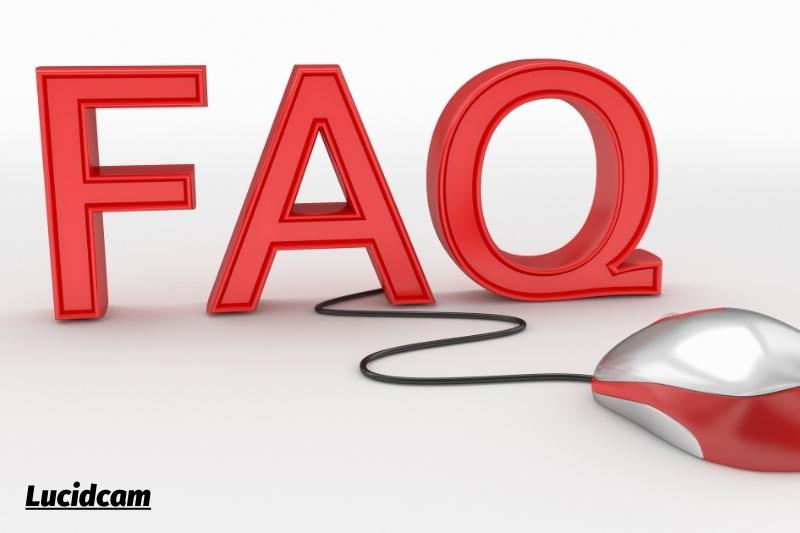
1. Is GoPro more powerful than DJI Pocket 2 or GoPro?
2. Is DJI Pocket 2 able to go underwater?
3. DJI Pocket 2 can take photos
Modes and features
The 64MP sensor of the DJI Pocket 2 can capture photos at 16MP resolution using four-in-1 pixel binning. You can also capture 4K, 2.7K and 1080p video at 60fps. It supports 24, 25, 30, 48 and 50 frames per second.
